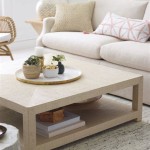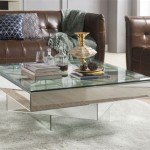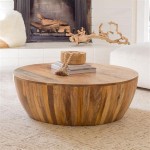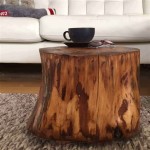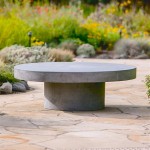Small Bedside Table Designs: Maximizing Functionality in Limited Spaces
The bedside table, a seemingly minor piece of furniture, plays a pivotal role in bedroom functionality. It serves as a convenient surface for nighttime essentials, a repository for reading materials, and a grounding element that contributes to the overall aesthetic of the sleep space. In smaller bedrooms, however, the challenge lies in selecting a bedside table that efficiently utilizes space without sacrificing style or practicality. Small bedside table designs address this challenge, offering a diverse range of solutions crafted to suit various needs and preferences. This article explores the key considerations and design options available when seeking a small bedside table.
Understanding Space Constraints and Functional Requirements
Before embarking on the search for the perfect small bedside table, a thorough assessment of the available space is crucial. Accurate measurements of the area beside the bed are essential to ensure that the chosen table fits comfortably and allows for easy movement around the room. Measuring the height of the bed is also paramount. The ideal bedside table height generally corresponds to the mattress height or sits slightly above it, facilitating easy access to items placed on the table. Standard bedside tables are typically 24-30 inches tall, but smaller models may be shorter, typically around 18-24 inches tall. Consider the overall bedroom style and choose a nightstand that complements the existing aesthetic.
Beyond dimensions, it is important to evaluate the functional requirements of the bedside table. Determine what items will be stored on or within the table. Will it primarily hold a lamp, a book, and a phone? Or will it also need to accommodate medications, reading glasses, and other personal belongings? The answers to these questions will dictate the need for drawers, shelves, or a combination thereof. Consider whether electrical outlets are readily accessible near the bed. If not, a bedside table with built-in USB ports or a power strip might be a worthwhile investment. Finally, consider the overall style of the bedroom and the desired aesthetic. Do the furnishings lean toward modern minimalism, rustic charm, or classic elegance? The bedside table should seamlessly integrate into the existing design scheme.
Exploring Different Types of Small Bedside Table Designs
The market offers a myriad of small bedside table designs, each with its unique characteristics and advantages. These designs can be broadly categorized based on their form, construction, and storage capabilities. Understanding these categories is essential for making an informed decision that aligns with individual needs and aesthetic preferences.
Floating Shelves: These minimalist options are mounted directly to the wall, creating a clean and airy look. They are ideal for extremely small spaces, as they take up no floor space at all. Floating shelves typically offer a single surface for a lamp, book, or other small items. They are easy to install and can be positioned at any desired height. Their simplicity contributes to a modern and uncluttered aesthetic.
Wall-Mounted Tables: Similar to floating shelves, wall-mounted tables offer a space-saving solution. However, these tables typically feature a folding mechanism that allows them to be collapsed against the wall when not in use. This design is particularly useful in rooms where maximizing floor space is paramount. Wall-mounted tables may also include a small drawer or shelf for added storage. When open, they provide a stable surface for a variety of items. When closed, they seamlessly blend into the wall, minimizing their visual impact.
Pedestal Tables: Pedestal tables offer a classic and elegant design. They consist of a tabletop supported by a single central pedestal leg. This design is often smaller than traditional bedside tables with four legs, making it suitable for tighter spaces. Pedestal tables typically feature a round or square tabletop. They can be made from a variety of materials, including wood, metal, and glass. Their simple design complements a wide range of interior styles.
C-Shaped Tables: C-shaped tables are designed to slide partially under the bed, maximizing the use of vertical space. The "C" shape allows the table to be positioned close to the bed, providing easy access to items. C-shaped tables are often lightweight and portable, making them easy to move around the room. They typically feature a single tabletop or a small shelf underneath. Their minimalist design makes them suitable for modern and contemporary bedrooms.
Bedside Cabinets with Drawers: These tables combine storage and surface area in a compact package. They often feature one or two drawers for concealed storage, along with a tabletop for a lamp, book, or other essential items. These cabinets come in a variety of styles, from traditional to modern, and can be made from a range of materials. When choosing a bedside cabinet with drawers, consider the size and depth of the drawers to ensure they can accommodate the intended contents.
Bedside Tables with Shelves: Instead of drawers, these tables offer open shelving, providing easy access to stored items. Shelves are ideal for storing books, magazines, or decorative items. Tables with shelves can create a more airy and open feel in a small bedroom. They are often less expensive than cabinets with drawers. The open shelving allows for displaying items and incorporating them into the room's decor.
Trunk-Style Tables: Repurposed trunks or small chests can serve as unique and stylish bedside tables. These tables offer ample storage space within the trunk itself, while the top surface provides a convenient surface. Trunk-style tables can add a touch of vintage charm or rustic flair to a bedroom. When choosing a trunk, ensure it is the appropriate height for use as a bedside table. Consider adding a protective layer to the top surface to prevent scratches or damage.
Stackable Crates: For a more rustic and economical option, stackable crates can serve as bedside tables. These crates can be stacked to the desired height and provide open storage space. Crates can be painted or stained to match the bedroom's decor. They are lightweight and easy to move around. Stackable crates offer a casual and relaxed aesthetic.
Material Considerations and Style Integration
The material and finish of a small bedside table can significantly impact its overall aesthetic and durability. Various materials are commonly used in bedside table construction, each with its unique properties and visual appeal.
Wood: Wood is a classic and versatile material that offers warmth and character. Solid wood tables are durable and long-lasting, while engineered wood offers a more affordable alternative. Different wood species, such as oak, maple, and pine, provide varying grains and tones. Wood can be stained or painted to match the bedroom's color scheme. It may be treated with a finish to prevent moisture absorption which will enhance its durability for years to come.
Metal: Metal tables offer a sleek and modern aesthetic. They are often lightweight and durable. Metal can be powder-coated in a variety of colors. Metal tables are typically easy to clean. The look compliments an industrial or minimalist styled bedroom.
Glass: Glass tabletops can create a sense of spaciousness and lightness. Glass is easy to clean and maintain. However, glass can be more susceptible to scratches and breakage. Glass can be paired with other materials, such as wood or metal, to create a more complex design.
Plastic: Plastic tables are a budget-friendly option. They are lightweight and easy to clean. Plastic can be molded into a variety of shapes and colors. However, plastic may not be as durable as other materials.
The style of the bedside table should complement the overall aesthetic of the bedroom. A minimalist bedside table will suit a modern and uncluttered bedroom while a rustic bedside table might coordinate nicely with a farmhouse-style bedroom. When selecting a bedside table, consider the color palette and texture to maintain consistency in the bedroom's design which will contribute to a cohesive and aesthetically pleasing space. Consider whether the other materials in the room are smooth or textured. If the goal is a coordinated look, the bedside table should feature similar textures as the existing elements in the bedroom. If contrast is the objective, the bedside table can be of a different texture altogether.

Small Curved Floating Bedside Table With Drawer Round Nightstand Shelf Rustic Mango Wood Wall Room

Boyd Sleep Prato Modern 1 Shelf Nightstand Black Small Bedside Table With Storage And Space Saving Design Prbk151ns The Home Depot

Ulf Modern Black Nightstand Small Bedside Table
Diy Bedside Table Ideas 20 Brilliant Homerun Blog

Small Curved Bedside Table With Open Shelf Minimalist Drawer Mango Wood Slim Wooden Nightstand

Nightstand Hugo With Drawer Small Whitewash Beech Woodek Design

Boyd Sleep Warwick Mid Century Modern 3 Shelf Nightstand White

How To Build Easy Diy Nightstands Young House Love

Small Side Table For Spaces Slim End With Holder 2 In 1 Design Narrow Living Room Skinny Bedside Nightstand

Solid Wood Bedside Table Modern Nightstand With Shelf Small Short Cabinet For Bedroom
Related Posts

